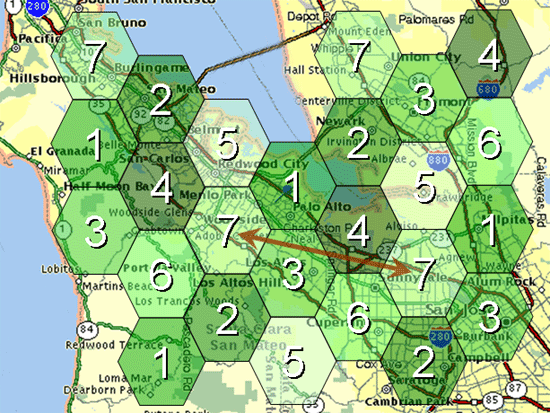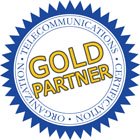- Antennas on towers, buildings
- Cell = coverage around tower
- Analog, 30 kHz channels
- Voice: medium quality
- Data with modems difficult
- Low capacity, high per channel cost
The first kind of mobile radio systems connected to the PSTN were called MPS: the Mobile Phone System. These employed base stations in large metropolitan areas and radios in automobiles with big whip antennas. The caller had to call a "mobile operator" and ask for a particular "mobile number", and would (maybe) be patched through.
Coverage - the geographical areas where service was available - was poor, and there was no mobility once the call was patched through… if the person with the mobile radio drove too far away from the base station, the call would be dropped.
To improve coverage and provide the possibility of mobility during a call, cellular radio systems were deployed. The first generation of cellular, the improvement on MPS, was called the ADVANCED Mobile Phone System (AMPS).

Radio frequency bands were defined for this service, and half was given to an affiliate of the phone company (the wireline cellular) and half given to a competitor. Each would then divide their block of frequencies into seven smaller bands, then construct big, ugly towers with low-power radios, and use one of the seven bands of frequencies on each tower.
The area covered by the low-power radios around the tower would be something like 3 miles or 5 kilometers in radius. This is the cell.
By making a careful plan for which towers would use which frequency bands, it is possible to RE-USE the same frequency bands over and over again in different geographic locations: if the towers where the frequencies are being re-used are far enough apart, they won't interfere with each other, since they use low-power radios.
In AMPS, the band of frequencies used in a cell is divided into 45 sets of 30 kHz radio channels, and each user in a cell is assigned a radio channel. Voice or modem signals are represented on the radio channel using continuous amplitude modulation of the channel frequency.
This analog technique results in middling- to poor-quality voice communications. It is not so good for data communications using a modem over the analog radio channel. When a user drives too far away from a base station, they have to be switched over or handed off to another cell.
Two things have to happen during a handoff: since each cell employs different frequencies, the cellphone has to change which frequency it's operating at; and the network has to hand off the phone call from one base station to another. This takes about 0.2 seconds, during which the communications will be interrupted or muted in this first-generation system. This was a bit annoying for voice; it caused modems to hang up.
Several strategies were attempted to keep the modems from hanging up during handoffs, but the reports from the field were less than encouraging. Pull over to send that fax!
Unfortunately, even if you are stationary, you can still change cells: if someone drives in the far side of your cell, you might be bumped to the next (overlapping) cell to make room for them.
The other problems with AMPS were low capacity and high per-channel cost.
In theory, we can have 45 users per cell. In practice, it's 40, because we have to keep some channels free for people driving around. 40 users, 3 miles radius… that's about 1.5 users per square mile… wouldn't work so well in Manhattan.
Sectorization, using antennas with shaped beams to create pie-wedge-shaped cells (called sectors to confuse people) can be employed to improve capacity; but not enough for the immense popularity of mobile communications.
We had to move on to better technologies.









